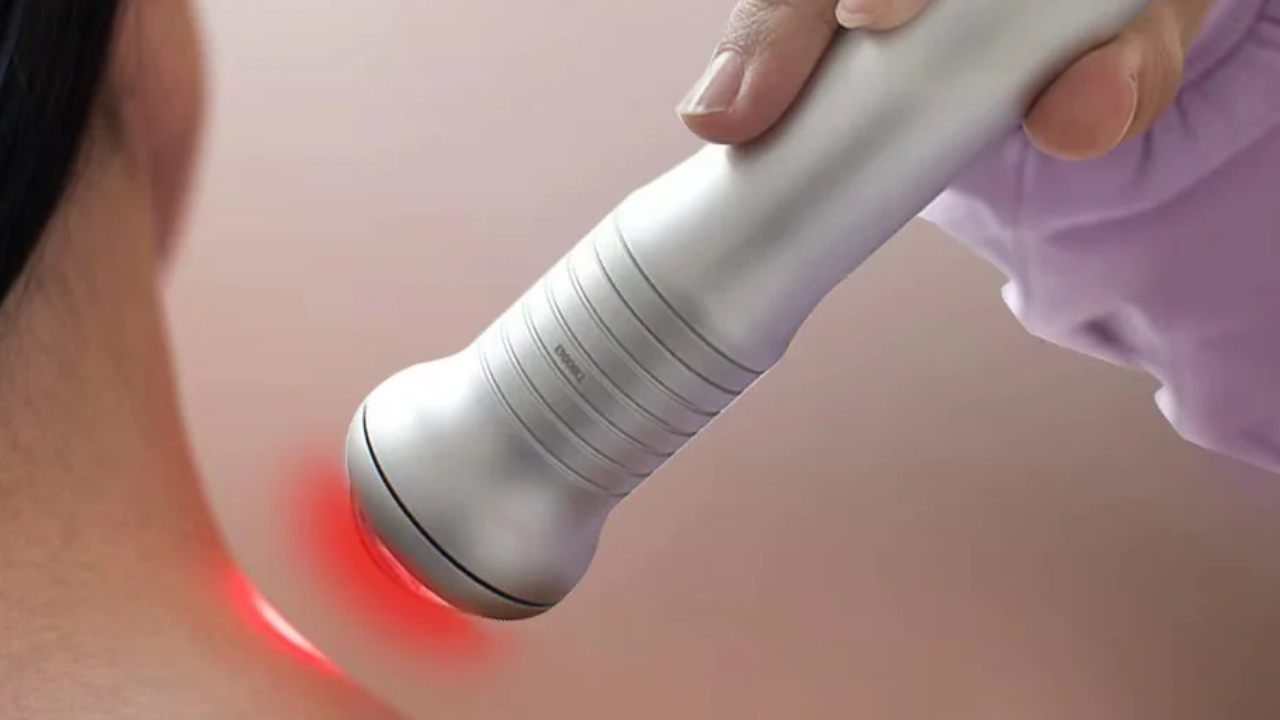A cutting-edge medical procedure called deep tissue laser therapy uses low-level laser light to enter deeply into tissues, encouraging cellular regeneration and hastening the healing process. In several musculoskeletal disorders, this non-invasive technique is frequently used to improve tissue healing, lessen inflammation, and relieve pain.
The number of sessions needed, the healthcare provider’s level of experience, and the patient’s location can all affect the deep tissue laser therapy cost. Because deep tissue laser therapy has the potential to increase general well-being and speed up healing, many patients feel it to be well worth the financial expenditure.
How Does Laser Therapy with Deep Tissue Work?
To stimulate cellular energy production and circulation, Deep Tissue Laser Therapy (DTLT) uses low-level laser light to penetrate deeply into tissues. Inflammation is decreased and tissue repair is sped up when the light activates biological processes. Among its many medical and therapeutic uses are the reduction of inflammation, the healing of pain, and the regeneration of tissue.
Elements that Reduce the Adverse Effects
The following strategies can be used to reduce the likelihood of deep tissue laser therapy side effects:
Non-Invasive Precision:
One of DTLT’s most notable qualities is that it is non-invasive. Low-level laser light is used in the therapy, which penetrates the skin without harming it or making it uncomfortable. Targeting particular tissues with precision reduces the possibility of more invasive operations’ side effects, like infections, scars, or longer recovery times.
Localized Treatment Approach:
A localized treatment approach is made possible by DTLT’s capacity to precisely target particular regions of concern. DTLT minimizes exposure to healthy surrounding tissues by targeting only the afflicted tissues, as opposed to systemic treatments that may impact the entire body. By using a tailored strategy, the risk of systemic adverse effects that are frequently linked to drugs and other therapeutic interventions is decreased.
Enhanced Cellular Healing Mechanisms:
By raising mitochondrial activity, deep-tissue laser therapy promotes cellular healing mechanisms. The low-level laser light causes internal photochemical reactions in cells, which enhances the synthesis of adenosine triphosphate (ATP), the cellular energy currency. This organic increase in cellular energy promotes tissue healing without adding foreign materials, lowering the possibility of negative side effects.
Anti-Inflammatory Effects:
Pain and suffering are frequently brought on by inflammation. It has been demonstrated that DTLT has anti-inflammatory properties by lowering oxidative stress and regulating cytokine levels. The likelihood of systemic adverse effects, such as gastrointestinal problems or weakened immune function, that are frequently connected to more general anti-inflammatory therapies is reduced by this targeted reduction of inflammation at the cellular level.
No Known Systemic Side Effects:
The fact that DTLT has no known systemic side effects is a big plus. The low-level laser light does not affect the entire neurological system or circulatory system; the therapy is localized. Compared to systemic drugs, which might have a variety of adverse effects affecting different organs and bodily processes, this is especially advantageous.
Pain-Free Treatment Experience:
Patients seeking treatment find DTLT appealing because it is a pain-free procedure. In contrast to several traditional therapies that could cause discomfort or worsen pre-existing conditions, DTLT provides a relaxing experience. This improves patient compliance while lowering the possibility of stress- or anxiety-related side effects during treatment.
Reduced Recovery Time and Accelerated Healing:
DTLT’s capacity to quicken the body’s natural healing processes results in shorter recovery periods. Patients feel relief from symptoms sooner thanks to more rapid tissue regeneration, which shortens the therapy period overall. This reduces the possibility of adverse consequences linked to protracted therapeutic procedures while also improving patient satisfaction.
Finally
Its non-invasiveness, targeted therapeutic approach, activation of cellular repair mechanisms, anti-inflammatory properties, and lack of known systemic side effects are the main reasons why Deep Tissue Laser Therapy can reduce side effects to a minimum. For those looking for efficient pain relief and tissue restoration with a lower chance of negative side effects than many conventional treatments, DTLT thus looks to be a potential choice.

